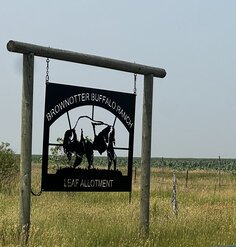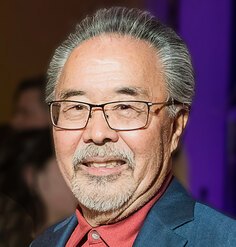Landscape Architects in Public Life: Billy Fleming
It has been six busy years since 2011 Olmsted Scholar Billy Fleming graduated with his BLA from the University of Arkansas. We touched base with this former White House staffer and rising design activist to learn about his work in public service and get his take on the agency of landscape architects in today’s political environment.
As a young landscape architecture student at the University of Arkansas, did you envision taking this “alternate” career path for a design professional? What pulled you in this direction?
The short answer is no. I never imagined working in politics or grassroots organizing when I began at the University of Arkansas.
I grew up in Fort Smith, a postindustrial, exurban manufacturing town on the Arkansas-Oklahoma border that’s been in severe economic decline for the last half-century. As a child, I saw my parents working three and four jobs between them just to stay afloat — getting ahead, instead of just getting by, was out of the question. They never got the chance to go to college. So when I enrolled at the University of Arkansas, I thought I’d just put my head down, do my studio work, wait tables on the weekend, and build a quiet, conventional career in landscape architecture. Like a lot of other folks in my generation, I viewed this nation’s political system as inexorably stacked against poor and working class folks like my parents. If life is about finding a way to maximize your impact on the people around you, political work just didn’t seem like a place where a person like me could make much of a difference.
That all changed in the fall of 2007 when I piled into a car with some friends and drove to Davenport, Iowa to hear a skinny guy with a funny name give one of the first speeches of his presidential campaign. Then-Senator Barack Obama lit something in me — and tens of millions of others — that’s driven me ever since. His biography, his intellect, and his unrelenting optimism in our ability to reshape the nation’s politics around poor and working class folks pushed me down a path of public service and activism that I never would have pursued otherwise. When I came back to Arkansas, I decided to run for — and won — the position of Associated Student Government President.
In 2012, I had the opportunity to work in President Obama’s administration at The White House Domestic Policy Council. At that point, I effectively abandoned the idea of a quiet, conventional career in design.
From that role as a White House staffer to your more recent work with the Indivisible project, how has your landscape architecture background served you in the jobs and projects you’ve been involved within the political arena?
There are two major ways in which my training as a landscape architect and my political work overlap. The first is that both designers and activists are storytellers — we rely on narratives about who we are, where we want to go, and how we’ll get there to move clients and coalitions alike. I couldn’t do what I do with Indivisible without that skill. Our local groups would probably tell you the same. If you look at how they managed to beat back the American Health Care Act — a bill seven years and $1 billion in the making — they did it by making themselves vulnerable, telling their stories, and simply forcing their Members of Congress to engage with their humanity in a real, grounded way. That bill failed because of good, compelling storytelling.
The second is that designers tend to think about the world in spatial terms, which is a perspective that most policy wonks and economists in state and federal governments often lack. Yet, the politics of issues like affordable housing, environmental conservation and restoration, and infrastructure development are incredibly spatialized. Our government’s inability to consistently manage the tension between big, abstract policy goals and project or community-level decision-making is what tends to undermine our best ideas. In fact, I’d argue that we already know much of what we need to know in terms of crafting a progressive policy agenda. We simply lack the political strategy that’s necessary for realizing those goals. I know that designers can help craft that strategy because I’ve been doing it for several years now, and my colleagues are much smarter than me.
What advice do you have for landscape architects who aspire to a career as a public servant? (And after 4+ years of design studios, why should new graduates go this route instead of working at a design firm?)
I think the two questions that every young designer must ask themselves are: What are my greatest talents? And in what role can I do the most good for the most people with those skills?
How one answers those questions is entirely up to them — I won’t pretend that what I’m doing is the right path for everyone. My design ambitions are built around the scope and scale of my work — the geographical breadth of my impact and how much of it is focused on the most vulnerable people and places. Those kinds of goals require an engagement with politics that’s been absent from landscape architecture for far too long.
If we hope to live up to our profession’s stated goals on issues like climate change and social justice, we need more landscape architects in public life. For some, that will mean going to work in big federal agencies like the Bureau of Land Management or the U.S. Army Corps of Engineers to try and change the way that national policy is translated into local projects. For others, that might mean finding a public figure you admire and going to work for them. I also hope that, for a few of us, it will also mean stepping up to run for office.
All of these options require that we set aside the traditional notion of what it means to be a designer. Not everyone is best-suited to working in a politically agnostic, high design office. But the professional incentives for landscape architects are all structured towards rewarding that path alone. The organizations for landscape architects have to find a way to broaden the meaning of design and help situate our profession for a new century in which the notion of apolitical work is now dead.
There are so many social, environmental, cultural, and humanitarian issues to support and defend. And there are so many fantastic organizations working on these causes—it can be very overwhelming. How can we, as designers, leverage our skillsets to be most impactful?
I’ll make a shameless plug here for folks to go to our website and find their local Indivisible group — there are nearly 6,000 now, with at least two in every Congressional District. Our theory is that, however much we might care about a broad set of progressive issues, we’re most effective when we’re meeting with and calling our Members of Congress in regards to whatever issue is before them that week — and that our impact is greatest when we have those conversations in person with our elected officials and their staff. We spend a lot of time figuring out what those issues are going to be and what tactics our groups can use to maximize their impact. Once you join one of our local groups, I think you’ll find that they too would welcome the skills and perspectives of landscape architects.
What do you think are the key issues that landscape architects should be taking on right now?
Activism and organizing are about solidarity — standing with others who may face greater risks than you, with the understanding that they’ll do the same for you down the road.
Our profession’s biggest fights are still yet to come, and they’ll likely come through budget cuts to agencies like the Department of Housing and Urban Development, the Environmental Protection Agency, and the Department of Interior. We have to be ready to leap into action when those fights emerge. But in the meantime, we have to broaden the scope of what our profession cares about — to push back against cuts to the nation’s safety net that are born disproportionately by our most vulnerable citizens. If we’re going to write and talk about social justice, then we have to broaden the set of issues that we purport to care about.
What’s next for you?
I’ll finish my Ph.D. in May and will be staying on in the Department of Landscape Architecture and Regional Planning at PennDesign to help launch a new design center named for Ian McHarg. The 50-year anniversary of his book, Design with Nature, is in 2019, and we’ll begin building up the center this fall in anticipation of that milestone.
Outside of that, I’ll continue my work with Indivisible and look forward to seeing where it takes me.











